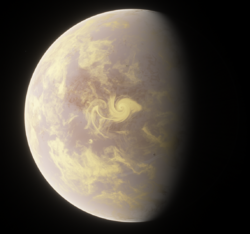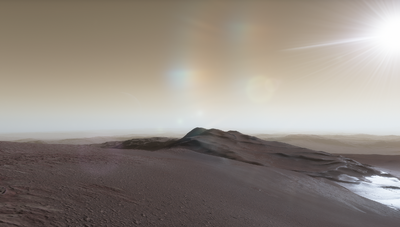Atlas
| Atlas | |
|---|---|
 | |
| Star, Position | Procyon A, III |
| Moon(s) | 1 (Sannyasa) |
| Diameter | 14,727 km |
| Length of day | 16.335 hours |
| Surface gravity | 1.3756 g |
| Atmosphere composition |
|
| Adjective | Atlassian |
| Population | 6,160,000 |
| Government | Federation of Atlas |
Atlas (Procyon A III, Alpha Canis Minoris III, α CMi III) is the third planet from Procyon A. It was first colonized in 2151 as part of the PACE (Procyon A Colonial Effort) mission.
Etymology
Physical characteristics
Size and shape
Chemical composition
Internal structure
Surface
Atlas' surface is a barren wasteland covered in dust. It is a hostile environment for any living organisms, plagued with frequent dust storms and a toxic atmosphere. Its dense atmosphere (pressure of 5.3 atm) also requires any humans to wear pressurised suits with an oxygen supply.
